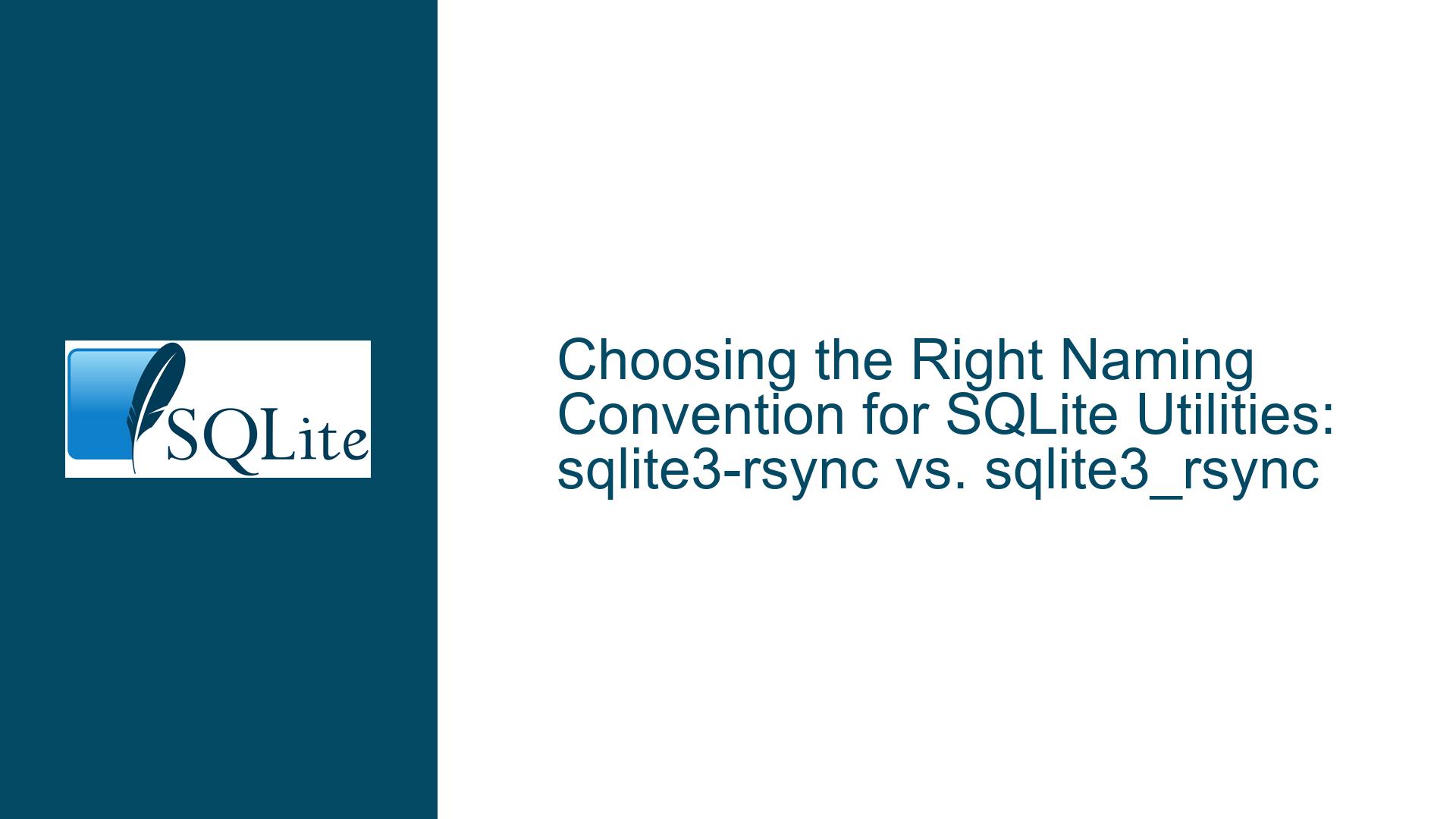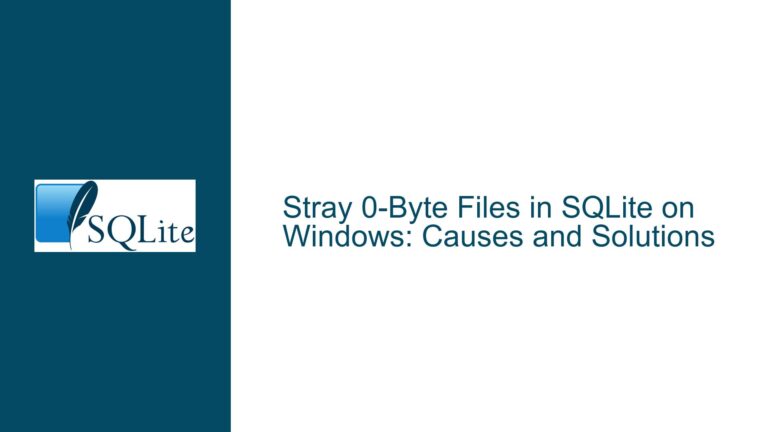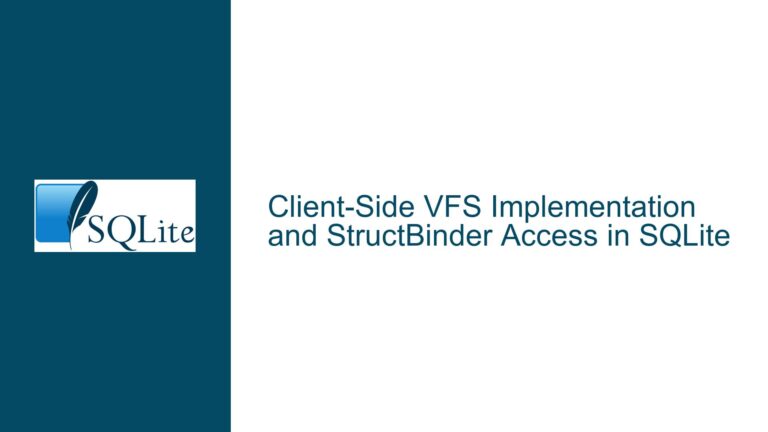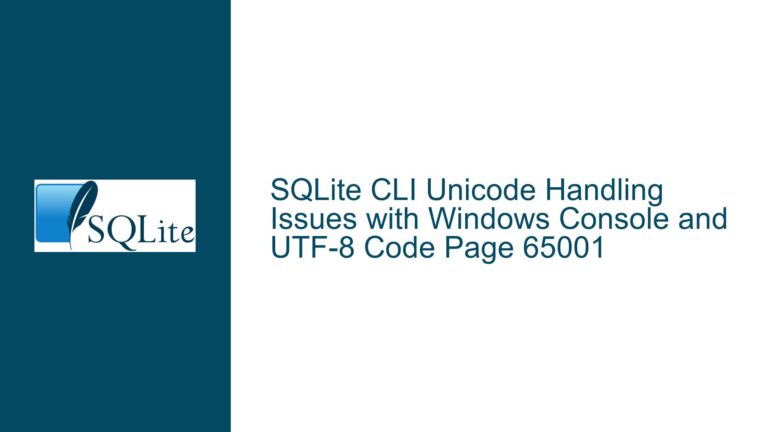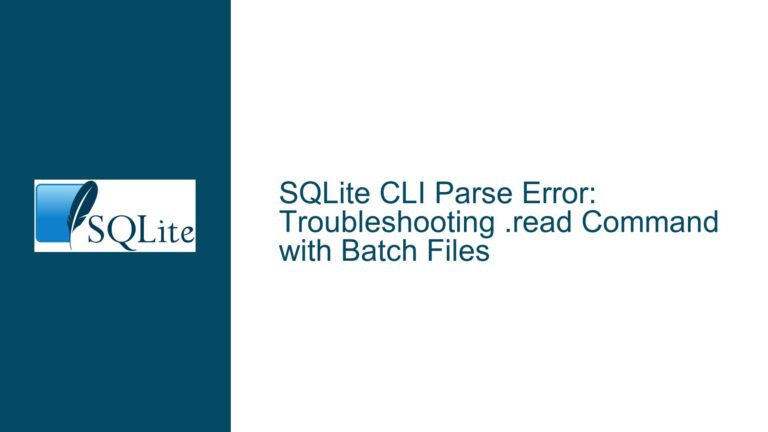Choosing the Right Naming Convention for SQLite Utilities: sqlite3-rsync vs. sqlite3_rsync
The Importance of Naming Conventions in SQLite Utilities
Naming conventions are a critical aspect of software development, especially for utilities that are part of a larger ecosystem like SQLite. The choice between using a hyphen (-), an underscore (_), or no punctuation at all in the name of a new utility like sqlite3-rsync may seem trivial at first glance, but it has far-reaching implications for usability, consistency, and integration with other tools and systems. The discussion around the naming of sqlite3-rsync highlights several key considerations that developers must weigh when making such decisions. These considerations include ease of typing, consistency with existing tools, readability, and the potential for confusion or errors in different environments.
The debate over whether to use a hyphen, underscore, or no punctuation in the name of sqlite3-rsync is not merely a matter of personal preference. It touches on deeper issues related to how users interact with the utility, how it integrates with other tools in the SQLite ecosystem, and how it is perceived by developers who may need to use it in various contexts. The decision will also affect how the utility is referenced in documentation, scripts, and command-line interfaces, making it a decision that has long-term consequences.
The Trade-offs Between Hyphens, Underscores, and No Punctuation
The choice between using a hyphen, underscore, or no punctuation in the name of sqlite3-rsync involves several trade-offs. Each option has its own set of advantages and disadvantages, and the decision must be made with careful consideration of how the utility will be used and how it fits into the broader SQLite ecosystem.
Hyphens (-): Hyphens are often preferred for their ease of typing, as they do not require the use of the shift key on most keyboards. This can make the utility more user-friendly, especially for those who frequently type commands in a terminal. Additionally, hyphens can improve readability by visually separating the components of the name, making it easier to parse at a glance. However, hyphens can also introduce ambiguity in certain contexts, particularly in programming languages or environments where the hyphen is interpreted as a subtraction operator. This could lead to unexpected behavior or errors if the utility name is used in scripts or code.
Underscores (_): Underscores are a common choice in naming conventions, particularly in programming, because they are valid identifiers in most programming languages. This makes them a safe choice for utility names that may need to be referenced in code or scripts. Additionally, underscores are consistent with the naming convention used in other SQLite utilities, such as sqlite3_analyzer, which could help maintain a sense of cohesion within the SQLite ecosystem. However, underscores require the use of the shift key, which can make them slightly less convenient to type, especially for users who are not accustomed to using the shift key frequently.
No Punctuation (sqlite3rsync): Omitting punctuation altogether can simplify the name and make it easier to type, as it eliminates the need for any special characters. This can be particularly advantageous in environments where typing speed and efficiency are important. However, the lack of punctuation can also make the name less readable, as it may be more difficult to distinguish between the different components of the name (e.g., sqlite3 and rsync). This could lead to confusion, especially for users who are not familiar with the utility or its purpose.
Resolving the Naming Dilemma: Best Practices and Recommendations
Given the trade-offs between hyphens, underscores, and no punctuation, the decision on how to name sqlite3-rsync should be guided by a set of best practices that take into account the utility’s intended use, its integration with other SQLite tools, and the preferences of its user base. Here are some recommendations for resolving the naming dilemma:
Consistency with Existing Tools: One of the strongest arguments for using an underscore in the name of
sqlite3-rsyncis consistency with other SQLite utilities, such assqlite3_analyzer. Maintaining a consistent naming convention across all SQLite tools can help users more easily identify and remember the names of different utilities, reducing the cognitive load associated with using them. If the goal is to create a cohesive ecosystem of tools, then using an underscore would be the most consistent choice.Ease of Typing and Readability: While consistency is important, it should not come at the expense of usability. If the majority of users find hyphens easier to type and more readable, then this should be a significant factor in the decision-making process. However, it is worth noting that readability can be subjective, and what one user finds easy to read, another may find confusing. Conducting a survey or gathering feedback from a diverse group of users could help determine which option is most user-friendly.
Compatibility with Programming Environments: If
sqlite3-rsyncis likely to be referenced in code or scripts, then using an underscore may be the safer choice, as it is a valid identifier in most programming languages. This would prevent potential issues that could arise from using a hyphen, which might be interpreted as a subtraction operator in some contexts. However, if the utility is primarily intended for use in command-line interfaces, then this consideration may be less relevant.Future-Proofing the Name: The decision on how to name
sqlite3-rsyncshould also take into account the possibility of future utilities being added to the SQLite ecosystem. If the goal is to establish a new naming convention that will be used for all future utilities, then using a hyphen could be a way to signal a break from the past and establish a new standard. However, this would require a commitment to using hyphens consistently in all future utility names, which could be challenging if there is strong resistance from the user base.User Feedback and Community Input: Ultimately, the decision on how to name
sqlite3-rsyncshould be informed by feedback from the SQLite community. This could involve conducting a poll or survey to gather input from users, or simply engaging in a discussion like the one that took place in the forum. By involving the community in the decision-making process, the developers of SQLite can ensure that the chosen name reflects the preferences and needs of the people who will be using the utility.
In conclusion, the naming of sqlite3-rsync is a decision that requires careful consideration of multiple factors, including consistency, usability, compatibility, and community input. While there is no one-size-fits-all answer, the recommendations outlined above can help guide the decision-making process and ensure that the chosen name is one that serves the needs of the SQLite community well into the future.
